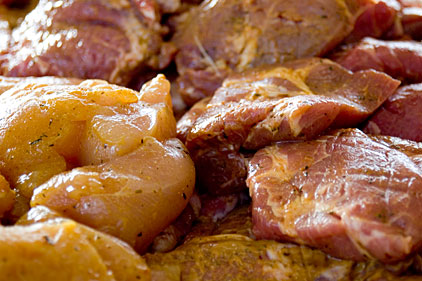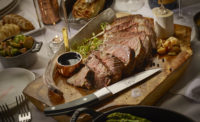Cooking & Chilling Systems
Cook/chill and foodservice
Processors are not the only industry that can take advantage of cooking & chilling’s advantages

Food manufacturers, with their desire to find ways to innovate and improve their operations, have long utilized cook/chill technology that allows food to maintain its quality and shelf life for as long as possible. However, more foodservice operators are adapting the technology to their own operations, reducing operator costs while improving consistency of the final product.
Chef Services Group, a culinary consulting firm, notes that some foodservice operators could benefit from creating a central commissary production system. Fine-dining restaurants, college universities, restaurant chains and hospital foodservice departments are among the operators that have benefited from these systems.
“The ideal food environment for this production format is one with high volume,” the company says. “It should be evident that your operation will meet this criteria if your operation is more than one restaurant location or contains multi-faceted foodservice environments.”
A primer on the concept from Alabama Power notes that while the kitchens that utilize these systems have to be specifically designed around the cook/chill concept — conventional walk-in refrigeration units cannot reduce the temperature of the food quickly enough — they can provide significant reductions in overhead costs while maintaining product quality.
“Foods are cooked to the proper temperatures, killing most organisms and microbes, followed by rapidly chilling the product down through the temperature range of 140° to 40°F,” it says. “The cooked food is then stored as close to the freezing point as practical without allowing it to actually freeze.”
Food of any type of pump-able consistency can be cooked and prepared in this process, including sauces, soups, pizza toppings and casseroles. They are cooked to the desired temperature and then loaded into large cook/chill bags, which are then securely sealed. The bags are immediately cooled using either blast or water chilling. Blast chilling uses cold air blown over the food in containers (usually shallow pans), while the water bath chilling method submerses sealed casings of cooked food in very cold water. Blast chilling produces a shelf life of up to about five days while water bath chilling can yield a shelf life up to 45 days.
Larger items, such as meat or poultry chunks that are larger than one inch in diameter, would either arrive at the facility in a ready-to-cook state or are processed into vacuum-sealed packages for the “slow cook” process in the cook/chill tank. These tanks circulate hot water from 150° to 190°F to slow-cook the food product. After the products have been chilled, they can be distributed to the various foodservice centers, where they can be thawed and re-heated (or “re-thermalized”) using a variety of cooking methods.
A highly skilled chef or other culinary professional is needed only at the central location to oversee the batch cooking. After the bags are delivered to the satellite locations, they can be reheated by someone with minimal training.
For more information, visit Alabama Power’s cook/chill systems guide.
Looking for a reprint of this article?
From high-res PDFs to custom plaques, order your copy today!






